It’s hard to deny the special something and inherently festive spirit that fills the air around the holidays, and not just solely in the US.
Around the world – and across a large swathe of different traditions and customs – the holidays season give way to practices unique and special to this time of year. That a lot of these rituals include copious amounts of food is the icing on top, and it makes our Arousing Appetites quest of global culinary exploration all the more fun.
One of our favorite new traditions comes to us by way of Norway. Featuring cookies like sandkaker and more, it’s definitely one of the sweetest customs we’ll encounter.

Sandkaker, Jul, Syv Slag and Cookies
Similar to the Finns and their joulutortut dessert, the Norwegian style of Christmas is starkly different than what you might expect based on the mainland European traditions, and there’s a very good reason for this.
Before Christianity spread rapidly around the continent, the Scandinavians had long observed their own midwinter festival, and while Christian events like Christmas eventually did take hold, many of the traditions of the ancient Jul remained very much intact.
Enter Jul
Fully understanding the original form of the Jul celebration requires us to take a trip back to the start of the Viking Age.
Until this time, the people inhabiting modern day Norway were more like a loosely tied coalition of farmers and merchants. Despite some of the earliest settlements discovered dating back thousands of years, the rate of societal development had been very much hampered by the harsh climate and conditions. Relative to thriving neighboring societies in the south like the Romans, the North really wasn’t all too happening.
Things changed by the end of the 8th century. Coinciding very conveniently alongside the Medieval Warm Period, groups of Scandinavian traders began exploring new sea routes and the new lands encountered. Spotting adequate and attractive farmlands as well as new mercantile opportunities, these seafaring people – who would come to be the Vikings – launched a series of raids as one unified force. Facing very little resistance, the Vikings easily settled in areas like England, Ireland, France and even as far south as Spain.
Early on in the Viking Age, one of the culture’s early defining characteristics was its pagan (i.e. non-Christian) and multi-theistic worship. In a time when Christianity was steadily sweeping over the rest of the continent, the Old Norse religion remained steadfast in paganism for a few extra centuries where multiple gods were recognized and natural events commemorated with special festivals.
It’s in this pagan era of the early Viking Age where we see the semblances of Jul really formalize. As a way of garnering good luck in the next season’s harvests, it was a Norse custom to offer an animal sacrifice to the pagan gods during the time the animal were fattest. This timeframe coincided around the midwinter timeframe, more specifically up to four weeks after the winter solstice. Alongside the sacrifice, it was also common for a host to brew plenty of ale and to prepare a feast for the community to gorge on.
By the turn of the millennium, Christianity began to make its way into the Viking society as well, and with it came the notion of Christmas as the de facto wintertime celebration event. Nevertheless, much of the existing Norse customs remained intact in Viking culture and were, you could say, “reinvented.”
Jul is actually one prime example of this “Norse steadfastness.” While the original harvest-related reason has lost significance and the celebration date has moved from mid-January to late-December, Christmas in Norway is very much a Jul-based celebration… not the other way around.
The Seven Strokes
Nowadays, one of the funnest – and sweetest – Norwegian Christmastime traditions is the syv slag til Jul, or the “seven strokes of Christmas.”
What makes this tradition so particularly sweet is that it revolves entirely around cookies… and a whole variety of them. As a way of bringing good luck to friends, family and the local community, it’s good form to have at least seven (considered a lucky number) different types of cookies to offer guests during the holiday season.
With plenty more than seven options of cookies to bake, no plate is the same from one baker to the next. For those preparing their first syv slag, though, a common recommendation is to start with offering the following 7 types: a crispy buttery wafer like sandkaker, shaped gingerbread like pepperkaker, something deep fried like fattigmann, an griddle cake like goro, a hand molded cake like berlinerkranser, a traditional recipe like krumkaker and perhaps even a fruit cake, Yule-log equivalent like Julekake. That’s really just the tip of the iceberg, and we’ve seen more than 30 kinds of Norwegian cookie favorites be perfectly appropriate for the occasion.
Despite the ubiquity of syv slag in the modern Norwegian Christmas tradition, the tradition itself really isn’t all that old. The first inklings of the tradition and for Christmas cookie recipes date back only around 140 years ago and coincide with the iron stove becoming an everyday appliance in Norwegian homes. Before then, cakes, cookies and wafers were more closely linked to Easter traditions than Jul.
And yet, in this relatively short period, it’s the cookies like sandkaker that bring you a corresponding julfryd – Christmas spirit – that have taken over.
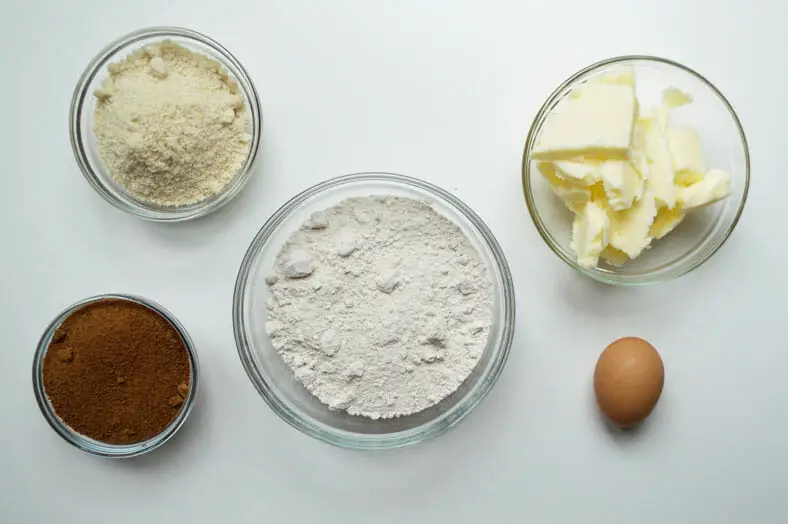
About the Recipe
When it comes to making sandkaker, there’s actually very little to it. In fact, most of your time on the recipe is spent waiting rather than active time.
You’ll start preparing the dough for your sandkaker by creating a fat-flour base. Using your choice of either a pastry dough blender, a stand mixer or a food processor, you’ll want to pulse together chunks of cold butter with your baking flour in a way very similarly to how you’d prepare a pie crust. One of the keys to this is that you don’t necessarily want all the butter to be cut into small pieces, and instead you should make sure there are discernible chunks of the fat still intact.
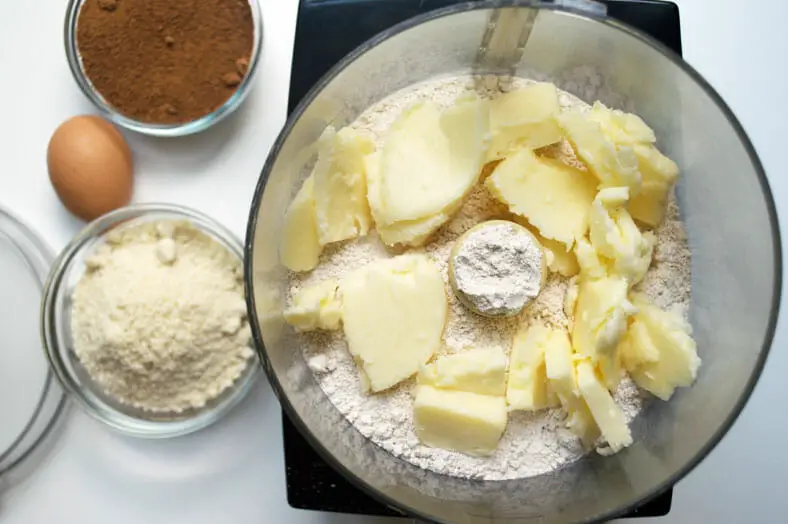
In order to get its nutty flavor, you’ll next add in your almond-flavored ingredient. Depending on the recipe, this is the point where you might get called to add crushed almonds or more simply almond flour. The goal here is the same: to add the distinctive nut component to your sandkaker dough.
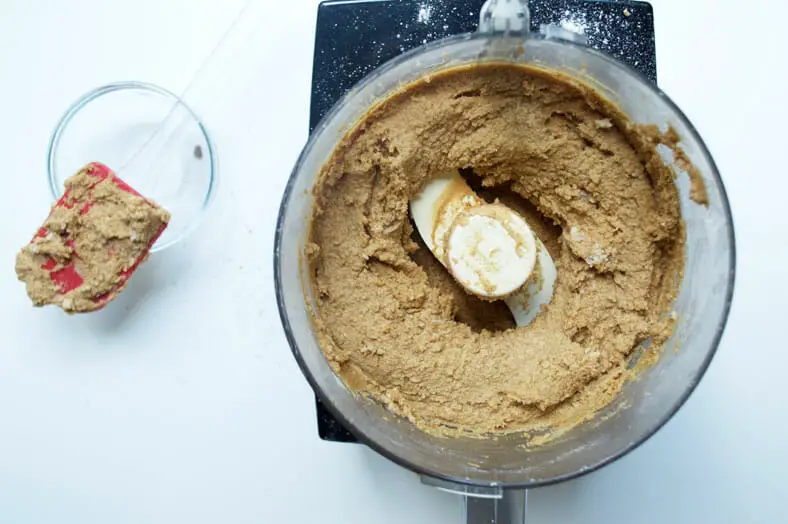
Finally, you’ll round out the process by adding in some sugar and egg, which will yield you a sandkaker dough that is rather wet and sticky for now. Once you have it, you’ll want to place your dough into the fridge and refrigerate it for at least 30 minutes.
Shaping and Baking the Sandkaker
After half an hour of resting, your dough will be noticeably less wet and sticky and instead be a little more malleable and generally easier to work with. This all is a very good thing considering that the next part is a crucial step in preparing delicious, crispy and thin sandkaker.
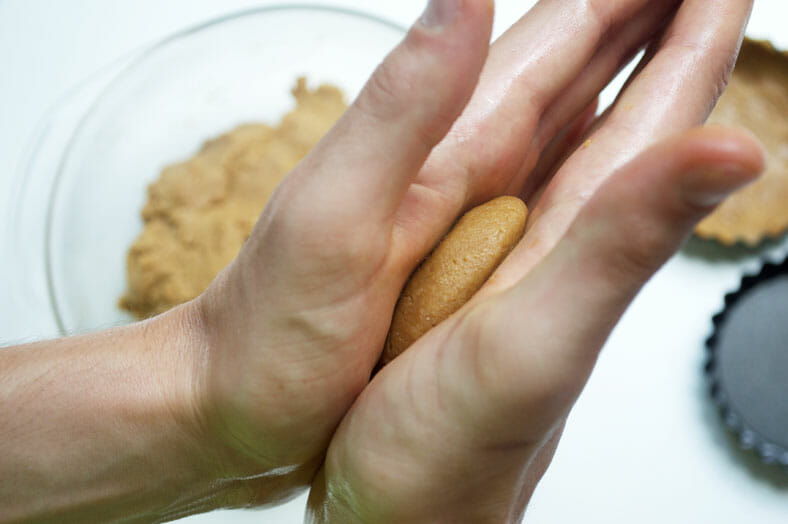
The easiest way to shape these sugary crisps is to press the dough against the mold of an existing shape. In our case, we pressed a circle of dough against mini tart tins until it was very thinly and evenly spread across the entire surface area.
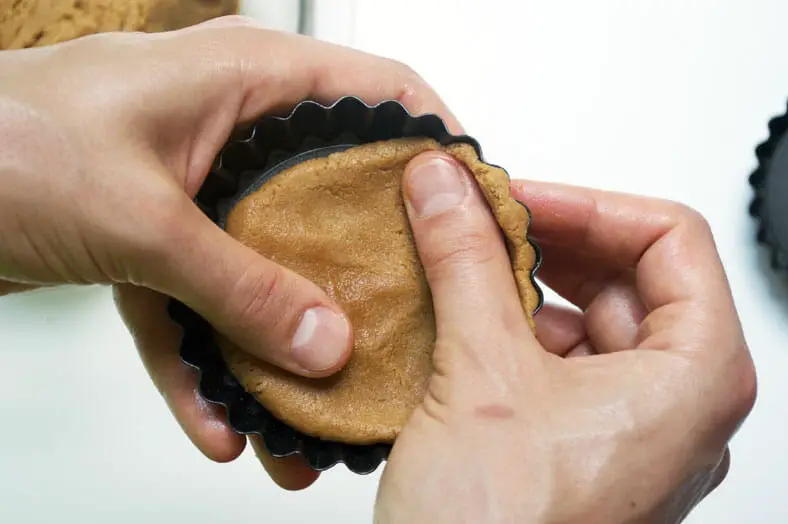
Here it’s a fine balance between not being too thin (and having it break prematurely) and being too thick, which is why we’d suggest you take enough dough to make a circle the size of a quarter in the palm of your hand.
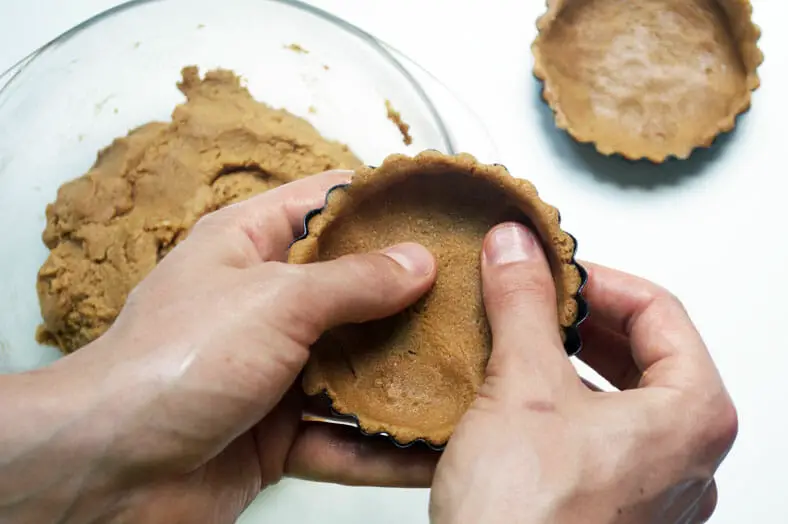
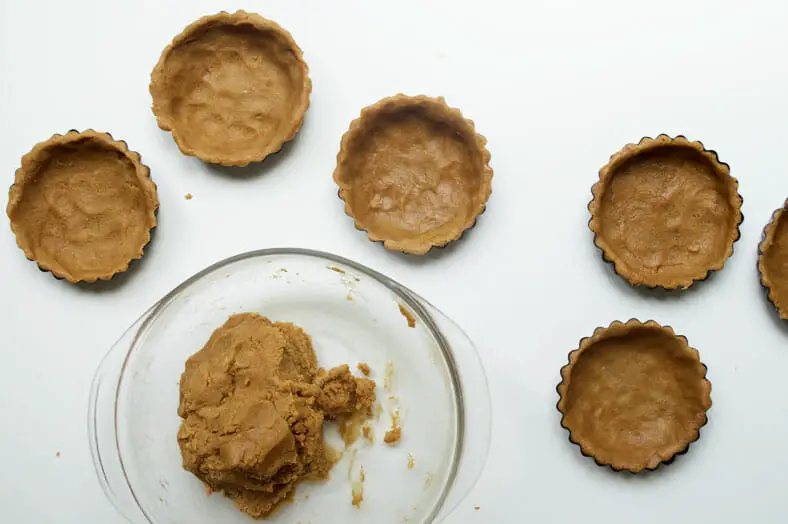
After you’ve repeated and molded enough of your sandkaker, simply pop it in the oven and let it bake for ~15 minutes. When it’s time to take them out, let these freshly baked sugar scones rest and cool a bit in their mold before popping them out. What this will do is help to keep them from breaking and cracking prematurely.
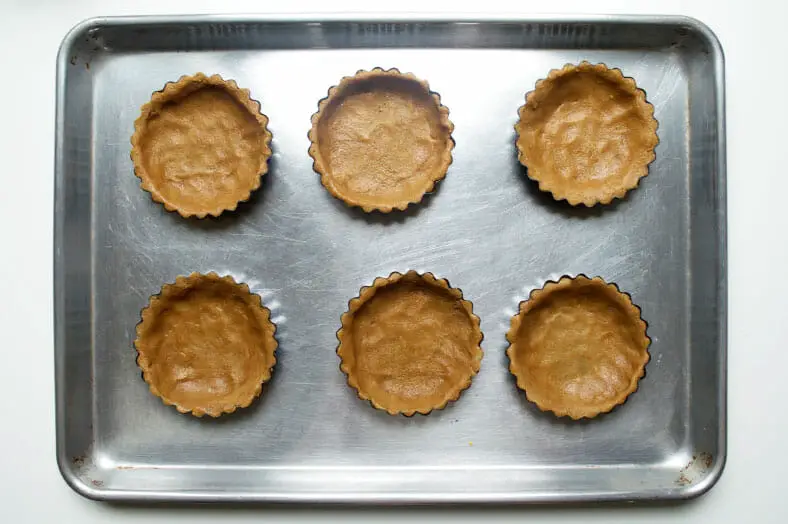
Once they’re out of their mold, it’s time to enjoy your sandkaker and get in the julfryd!
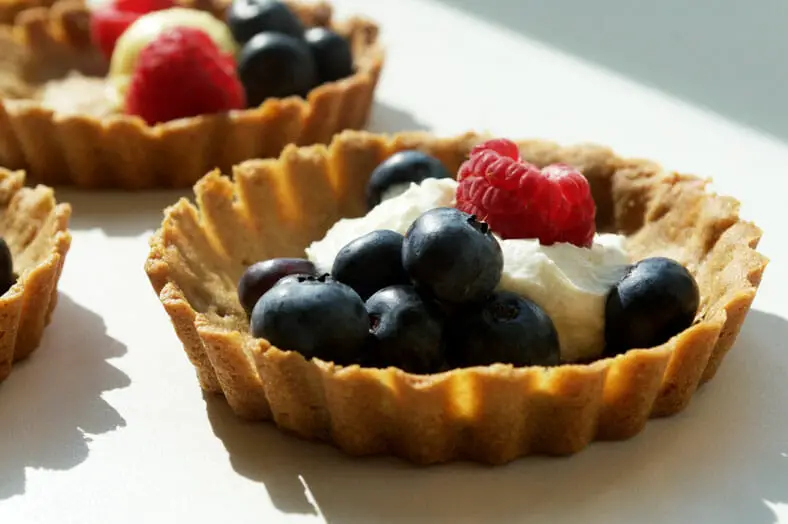
Our Take on the Recipe
While there were a lot of great recipes to choose from, we really liked the blog of an American expat living in Norway and cooking her way through Norwegian food. As a support of her own quest, we based our own sandkaker off of her original reference recipe.
Per usual, we still made some adjustments to her recipe, although perhaps one of the things we liked most was a change the recipe already contained. Most other sandkaker recipes called for crushed almonds, whereas this one called for a much simpler, less-work-involved almond meal. Since we’re fans of less work, the almond meal was here to stay.
Outside of that, we did change the type of flour used to a whole wheat pastry flour from Bob’s Red Mill, and we made our usual adjustment of swapping out regular sugar in place of coconut sugar. Like with most baked goods we’ve made here on Arousing Appetites, this changed the color to be slightly darker on our own sugar scones, but we actually really liked how it turned out.
Another adjustment, albeit minute, that we made was to distinctly use grass-fed butter in our sandkaker. Generally, we leave it more as a suggestion that you use grass-fed butter instead of regular butter, but in the case of sandkaker, it actually led to a sturdier shell and – we believe – a richer flavor.
There’s otherwise little need to mess more with a recipe that already works and that only really features a handful of ingredients, and what you’ll get is a delicious cookie that puts you in the perfect mood for any holiday celebration.
Enjoy!
How do you shape and bake your sandkaker? Comment below!
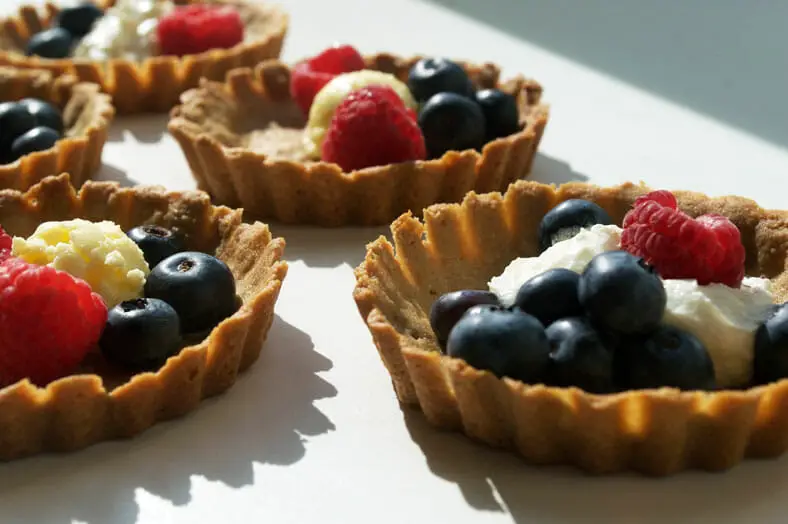

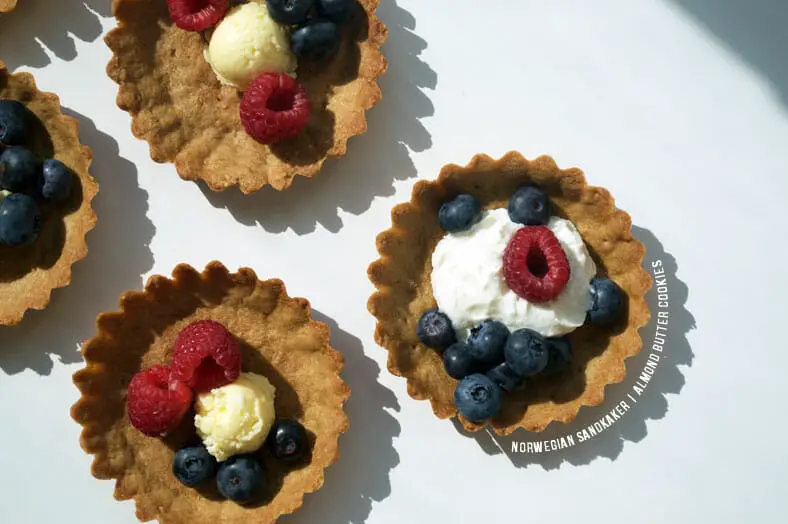
These look so good–not too sweet at all 🙂
Thanks Kristen! Indeed they are.. they’re the perfect balance between a nutty flavor with just the right touch of sweetness. Let us know if you give them a try 🙂
What a fascinating post, and these wafers look delicious!
Thank you Rachel! If you happen to give the recipe a whirl, let us know 🙂
Delicious, what an elegant dessert!
Thank you Allie! Let us know if you end up making it 🙂
Oh my goodness, these are BRILLIANT! I loved reading the history of these Sandkaker cookies. We’re definitely going to have to give these a go this season.
Thanks Erin! Definitely keep us posted on how they turn out if/when you make them 🙂
What a cute cookie! I’d love to try these this holiday season!
Thanks Megan! If you give it a go, let us know how they turn out 🙂